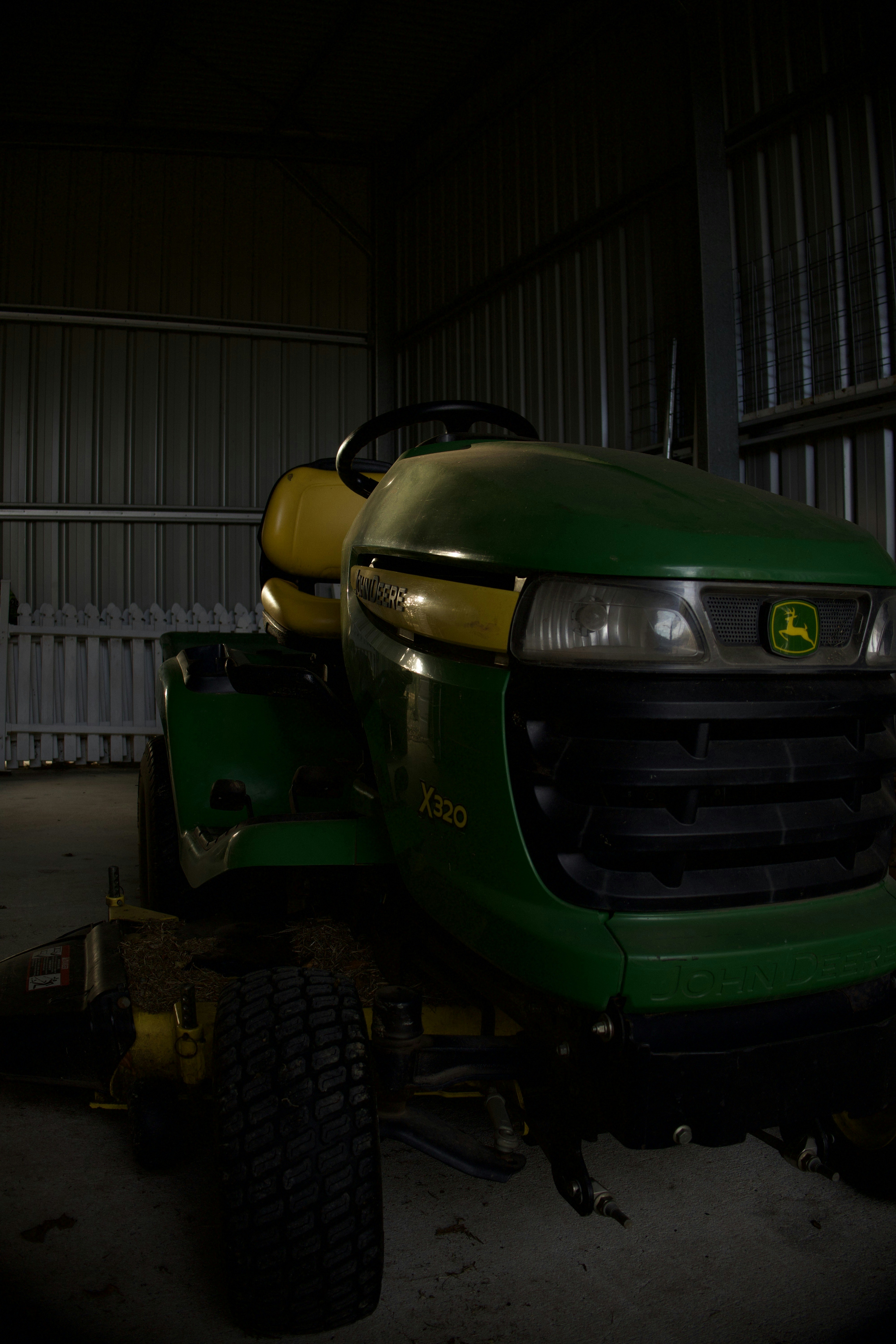The Importance of Winterization for Lawn Equipment
Winterization of lawn mowers and outdoor equipment is an essential process that every homeowner should prioritize. The cold weather, along with environmental factors such as moisture and extreme temperatures, can have detrimental effects on machinery. Equipment left unprepared can suffer from a range of issues, including rust formation, fuel degradation, and the overall reduction of mechanical efficiency. These problems can compromise both the performance and longevity of lawn care tools.
One significant concern is the impact of freezing temperatures on liquid components of lawn equipment. For instance, water left in fuel lines or chambers can freeze and expand, leading to cracks and ruptures. Such damage not only hinders operation when the warm weather returns but can also result in costly repairs or replacements. Additionally, moisture accumulation can foster rust and corrosion, contributing to the deterioration of metal parts and reducing the lifespan of the equipment.
Moreover, proper winterization can help maintain engine integrity. Stale fuel often leads to hard starting in the spring, and without adequate preparation, homeowners may face frustrating delays in their lawn maintenance schedules. By performing winterization tasks such as draining fuel, adding fuel stabilizers, and changing the oil, the risk of engine issues significantly decreases. Therefore, these preparatory measures ensure the equipment remains in optimum condition and is ready for immediate use as soon as the grass begins to grow.
Investing time and effort into winterizing lawn machinery can save homeowners from the hassle of unexpected repairs and lengthy downtime during the spring season. Thus, understanding the importance of winterization not only supports equipment maintenance but also enhances the overall efficiency and functionality of lawn care tools as they transition out of hibernation.
Step-by-Step Guide to Winterizing Your Lawn Mower
Preparing your lawn mower for winter is essential for ensuring that it operates efficiently in the spring. To begin, gather the necessary tools, which typically include a wrench set, screwdriver, oil catch pan, a fuel stabilizer, a spark plug wrench, and cleaning supplies such as soap, water, and a cloth. Safety should always come first; wearing gloves and goggles is recommended while performing maintenance tasks.
The first step is to clean your lawn mower, which involves removing grass clippings, dirt, and debris. This can prevent rust and damage during the winter months. Use a stiff brush and a garden hose to carefully clean the mower’s deck. Make sure to tilt the mower on its side, with the air filter facing upwards to prevent water from entering the engine.
Next, focus on the fuel system. If your mower uses gas, remove any stale fuel. This is done by running the mower until the tank is empty, which helps in preventing the fuel from degrading over the winter. For those who prefer to keep fuel in the tank, adding a fuel stabilizer is crucial, as it helps to preserve the fuel quality throughout the winter.
After addressing fuel management, it is time to change the engine oil. Old oil contains contaminants that can harm the engine if left unused for several months. Remove the old oil using the oil catch pan, and replace it with fresh, manufacturer-recommended oil. Be sure to check the oil level after refilling.
The final preparation step is to inspect and replace the spark plug if necessary. A well-functioning spark plug ensures better engine performance when the mower is put back to use. Additionally, check the air filter and replace it if it appears dirty or clogged.
By following these steps diligently, homeowners can ensure their lawn mowers are fully winterized, leading to a hassle-free startup when spring arrives.
Proper Storage Techniques for Lawn Equipment During Winter
Adequately preparing lawn mowers and other gardening equipment for winter storage is crucial for ensuring their optimal performance when the gardening season returns. One primary consideration is the environment in which these tools are stored. Ideally, lawn equipment should be placed in a temperature-controlled space to mitigate the risks associated with extreme cold or moisture. Garages or sheds that maintain a steady temperature can prevent components from freezing and subsequently cracking.
Proper positioning is another important factor. When storing lawn mowers and other equipment, they should be positioned upright whenever possible. This arrangement helps to preserve the integrity of the fluids within the machinery, preventing leaks and ensuring that engines remain in working order for spring startups. Furthermore, using shelving to elevate smaller tools can help maintain organization while keeping them out of potential harm.
Engaging protective measures such as covering the equipment is essential. Investing in quality, breathable covers shields the machinery from dust, moisture, and pests, which can lead to detrimental effects over time. While tarps and blankets may suffice, they can trap moisture, thereby promoting rust or mildew. Instead, select materials specifically designed for lawn care equipment. Additionally, consider disconnecting the battery for gas-powered mowers and stowing it separately in a cool, dry location to extend its lifespan.
Avoiding common storage mistakes is critical. Many users neglect to drain fuel from their mowers, leading to clogged fuel lines and carburetors. Likewise, skipping routine maintenance tasks, such as cleaning blades and performing oil changes, can result in unwanted buildup, which may adversely affect performance come spring. By adopting these best practices for winter storage, gardeners can safeguard their investment and ensure that their lawn equipment is ready for efficient operation as soon as winter melts away.
Spring Startup Tips: Getting Your Equipment Ready for Use
As spring approaches and the threat of frost diminishes, it becomes crucial to prepare your lawn mowers and equipment for the active mowing season ahead. Proper preparations can significantly ensure a smooth transition from winter storage to operational readiness. This section outlines key maintenance procedures to follow to guarantee that your equipment is in top condition.
First and foremost, conduct a thorough inspection of the battery. During winter storage, batteries can lose charge or develop corrosion. Begin by checking for any signs of wear or damage. Clean the terminals and ensure the battery is fully charged before installation. If the battery is more than a couple of years old and exhibits performance issues, it may be prudent to consider a replacement.
Next, fuel preparation is essential. If you stored your equipment with fuel in the tank, it is advisable to replace it. Gasoline can degrade over time, leading to clogged fuel lines and carburetors. Empty the old fuel and replace it with fresh gasoline. Additionally, adding a fuel stabilizer can prolong the life of your new fuel, ensuring efficient operation as you start your mowing tasks.
Furthermore, a complete safety inspection should be conducted. This includes checking all safety features, such as blade guards and kill switches, to ensure they are operational. Examine the blades for sharpness and conditions; dull blades can damage your lawn and create unnecessary stress on the mower engine. Additionally, inspect belts, cables, and tires for proper inflation and wear, replacing any deteriorated parts as needed.
By diligently following these startup tips, you’ll not only enhance the performance of your lawn mowers and equipment but also mitigate potential problems that could disrupt your mowing season. A comprehensive preseason evaluation is key to fostering a successful springtime mowing experience.
If you’re interested in purchasing the item you seek, please click the link for additional details: #americanachoice.
https://amzn.to/3SBN3Oy
AFFILIATE DISCLOSURE: I am an affiliate for this company, I am not a paid employee.
I may receive a commission if you click a link on this page and choose to purchase something.
You can rest assured I will only share things I believe in and will be valuable to you.



